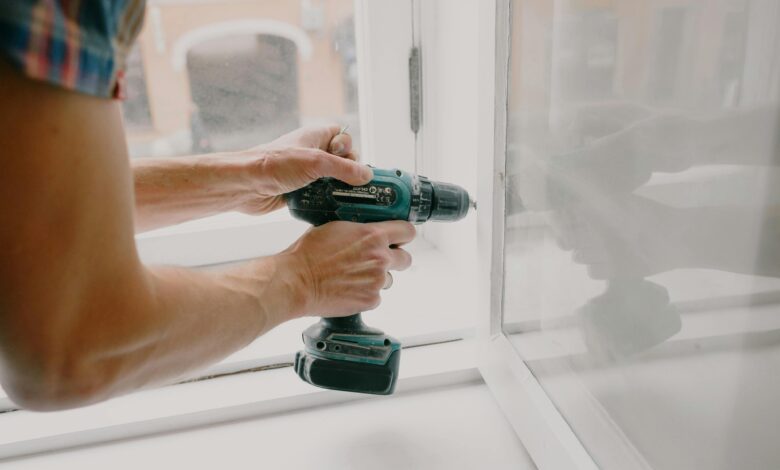Essential Maintenance for Your Aging Home

Aging homes, with their unique architectural charm and storied walls, are a significant part of Chicago’s housing landscape. While these residences boast character, they often come equipped with a set of challenges that require diligent maintenance to keep them functional and safe. For homeowners, understanding the importance of regular upkeep is key to preventing minor issues from ballooning into major expenditures. This article will guide you through the essential maintenance tasks to ensure your vintage abode remains a treasured asset.
As homes age, they undergo various changes that can affect everything from structural integrity to internal systems. Foundations settle, wood beams can warp or rot, and what was once state-of-the-art wiring now presents a potential fire hazard. It’s crucial for homeowners to stay vigilant and recognize the early signs of aging in their homes. Regular inspections can reveal problems such as small cracks in the foundation, signs of water damage, or outdated electrical systems that need an upgrade to meet current safety standards.
Plumbing Maintenance and Repairs
Among the most critical systems in any home is the plumbing. Older homes in Chicago are particularly prone to plumbing issues due to their aged pipes and fixtures. Regular checks are necessary to ensure that everything is functioning correctly and to prevent the inconvenience and expense of water damage. A good idea for local homeowners facing such challenges is to invest in professional Chicago plumbingrepair services, which specialize in maintaining and repairing older plumbing systems. Homeowners should watch for signs of leaks, check water pressure, and inspect visible pipes for signs of deterioration, such as rust or lime deposit build-up. Additionally, ensuring drains are clear and free from obstructions can prevent back-ups and other complications.
Preventative maintenance is key. For instance, before the onset of the freezing Chicago winter, it’s wise to have your plumbing inspected by professionals who can identify and fix potential problems like cracks or weak joints. These experts can also advise on how to protect pipes from freezing temperatures, a common issue that can lead to bursts and extensive water damage.
Roofing: Inspections and Upkeep
The roof, your home’s primary shield against the elements, requires special attention, especially in cities where the weather is harsh. The cycle of freezing and thawing can be particularly brutal on roofing materials. Before the winter season and after, it is advisable for homeowners to perform a visual inspection of the roof. Look for damaged or missing shingles, clogged gutters, and integrity breaches around chimneys and vents. These inspections can be done using a ladder for a closer look, or binoculars can be used for a safer ground-level assessment.
While minor issues can often be a DIY task, major repairs should be left to professionals. Timely addressing these issues can prevent leaks that could lead to interior damage, mold, and a host of other problems that compromise both the structure and the comfort of your home.
Electrical System Safety
Electrical systems in older homes were not designed to handle the variety of modern appliances and devices that are standard in today’s households. This mismatch can pose safety risks, including the potential for fires. Homeowners should consider a professional inspection of their electrical system to identify any urgent updates needed to enhance safety and efficiency. Common signs that your electrical system may need attention include frequent circuit breaker trips, flickering lights, or outlets that are hot to the touch.
Updating your home’s electrical wiring can be a significant investment but is crucial for safety and functionality. Upgrades can also improve your home’s energy efficiency, reducing electricity bills and enhancing overall home value.
Enhancing Home Insulation
Effective insulation is essential for maintaining comfort and reducing energy costs in any home, but it’s particularly critical in older structures where drafty windows and insufficient insulation can lead to significant heat loss. Older homes, with their unique construction and aging materials, often require an upgrade to modern insulation standards. Homeowners should assess the current insulation in attics, walls, and basements. Signs that insulation needs an upgrade include uneven temperatures in the house, high heating bills, and visible deterioration of old insulation materials.
For those looking to enhance their home’s insulation, several modern solutions can be applied without disrupting the home’s character. Spray foam, for example, can be injected into existing walls, and blown-in insulation can be used in attics without the need for extensive renovations. These methods improve thermal retention and contribute to overall energy efficiency, which is not only good for the wallet but also for the environment.
Window and Door Maintenance
Windows and doors are common culprits for energy loss in aging homes. They often develop gaps or fail to close properly over time, allowing air to escape. This can be particularly problematic in the windy city, where breezes can penetrate these gaps, leading to increased energy costs and reduced comfort. Homeowners should regularly inspect windows and doors for drafts, which can be detected using a simple hand-held approach or thermal detectors.
Repairing or replacing old windows and doors with energy-efficient models is a valuable investment. Modern double or triple-glazed windows with insulated frames not only reduce energy loss but also block noise, which is a significant benefit in urban areas. For doors, weatherstripping and proper sealing are quick fixes that can improve energy efficiency and security.
Utilizing Government and Private Assistance Programs
There are numerous government and private programs designed to assist homeowners with the costs of maintaining and upgrading their homes. These programs can provide financial relief for tasks such as insulation upgrades, window replacements, and more extensive renovations necessary to preserve older homes. For instance, energy efficiency grants and rebates can be available through local utility companies or federal programs aimed at reducing energy consumption.
Homeowners should research and apply for these programs, which often have specific requirements and application periods. Local housing authorities or energy advisors can provide guidance on what programs are available in Chicago and how to qualify for them, ensuring homeowners get the support they need to maintain their aging homes effectively.
Conclusion
Maintaining an aging home is no small feat, but with the right approach, it can be incredibly rewarding. By addressing key maintenance areas like insulation, windows, doors, and utilizing available resources, homeowners can protect their investment and ensure their home remains a comfortable, safe, and efficient place to live.
The process of maintaining an older home is a mix of preserving the past and embracing modern improvements. Homeowners who take proactive steps to care for their homes not only contribute to their own quality of life but also to the preservation of Chicago’s rich architectural heritage. As you continue to invest in and care for your home, remember that you are not just maintaining a structure; you are preserving a piece of history for future generations to cherish.


